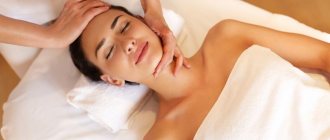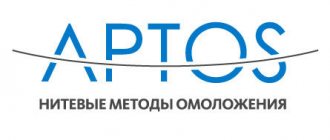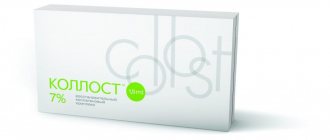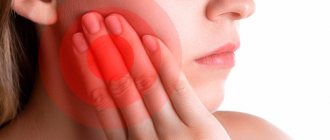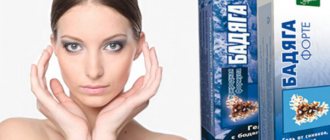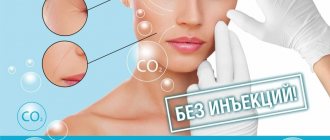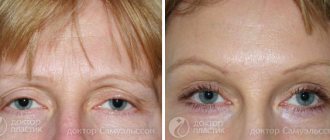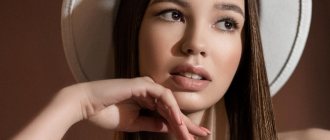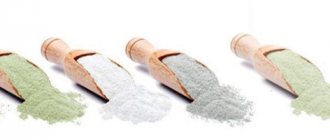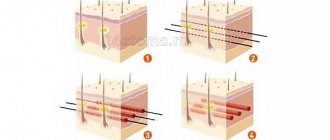Modern cosmetology helps to restore the attractiveness lost with age and “reset” several years. There are now many methods for this, one of them is the development of the Russian physician M. A. Sulamanidze. These are Aptos implants, which are implanted into soft tissue and form a supporting frame. Today, threads are widely used for face lifting. By the way, the result is evidenced by the name itself, which literally means “against ptosis.”
- Indications for use
- Contraindications for bioreinforcement
- Advantages and disadvantages of thread lifting - table
- Aptos thread types
- Preparation for the procedure
- How to make reinforcement
Installing Aptos threads - video
- Aptos threads - results after three weeks - video
What are Aptos threads for face lifting?
The first Aptos threads appeared in 1996. Then they were only insoluble. Then, when synthetic materials were discovered in Europe that dissolved and were removed from the body without any health consequences, the range of implants was also expanded in Russia, and soluble threads appeared under the Aptos brand. They solved various aesthetic and age-related problems.
Initially, the threads were smooth - this is understandable, they were used as suture material after operations. Then medical practice showed that it was necessary to work on the shape of the implants, because smooth threads, especially with severe tissue ptosis, had a very short lifespan. The new generation of implants has been improved - in cosmetology they began to introduce threads with notches and fixing cones - they prevented the implant from sliding and moving from the given trajectory. This way, doctors were able to guarantee the patient a much longer-lasting result.
When choosing threads, the severity and localization of wrinkles (or other skin defects), the physiology and genetics of the patient are taken into account.
Aptos threads are made from different materials - some are completely absorbed in tissues, others are not
Comparison with analogues
Aptos threads were created in Russia, the authors of the methods are domestic surgeons.
The quality of the material meets all requirements and standards and is in no way inferior to foreign analogues. The product is respected and appreciated for its diversity and the ability to select an individual approach to the patient.
Cosmetologists also use:
- French Spring Thread, Resorblift;
- Italian Happy lift;
- Spanish Silhouette Lift, Silhouette Soft;
- South Korean Kogi mesothreads;
- Japanese analogues.
It is impossible to say with 100% certainty which material is better. Products differ in composition, capabilities, indications for use and other nuances. The selection of threads is carried out exclusively by a cosmetologist.
Indications for use
Modeling the face and body with Aptos threads solves two problems:
- rejuvenation;
- correction of appearance defects.
Implants can be installed on the face, neck, décolleté, arms, chest, stomach, hips and knees - these are the most problematic areas for any woman.
There are no age restrictions for the procedure. Most of the patients are women aged 30 to 45 years. For those who are younger, threads, as a rule, are not yet needed; for those over 50, the doctor may recommend other methods of correction. There are also men among clients; for them (as well as for women, however) the big advantage is that the procedure is non-invasive (compared to surgery), that is, there are no stitches, a long rehabilitation period and scars subsequently reinforced.
Aptos threads can correct almost any age-related changes and aesthetic problems
Minuses
In addition to the positive aspects, there are a number of disadvantages, which are as follows:
- Introduction tactics. The fibers are installed in the fatty tissue, so it is very important to maintain the installation depth.
If the injection is too deep, results may not be seen at all, and insufficient depth can lead to skin deformations, retractions, unevenness, and threads protruding through the surface of skin structures. - Difficulty in removing non-absorbable threads. Notches on the fibers allow them to fuse with the connective tissue, so if inflammatory foci occur or signs of rotting occur, it is quite difficult to remove the material.
The procedure lasts about 50 minutes, has a specific rehabilitation period, on which the result of the manipulation also depends.
Contraindications for bioreinforcement
Bioreinforcement, like any other medical procedure, has a number of contraindications and is not performed on patients:
- with exacerbations of infectious and chronic diseases;
- with skin diseases and inflammation in the area of implantation;
- with oncology;
- with heart and vascular diseases, blood clotting disorders;
- with a tendency to form keloid scars;
- with already installed implants in the correction area.
It is not advisable to carry out the procedure during pregnancy and lactation.
Reinforcement cannot be done in case of certain diseases, skin damage, as well as during pregnancy and lactation
Advantages and disadvantages of thread lifting - table
| + | — |
|
|
Reinforcement with Aptos threads has exactly the same pros and cons as the procedure with any other threads. The materials used for their manufacture are the same as those used by all modern manufacturers - polypropylene for non-absorbable threads, caprolactone and polylactic acid for bio- or absorbable implants. Almost all manufacturers now also work with notches. So Aptos is chosen, rather, for other reasons: if the specialist the patient wants to see (and most often they go to the recommended specialist, and not to any clinic) works with these threads, and if the implants are suitable for the price. The cost of reinforcement consists of the number of installed threads - they are estimated individually. The difference in price, by the way, is significant: if Aptos (1 piece) costs 1400–2500 rubles, then foreign analogues are 2–5 times more expensive. So, Tissulift threads will cost 5,000 rubles. for 1 piece, Silhouette Lift - up to 8000 rub. for 1 piece, and Silhouette Soft - up to 15,000 rubles. for 1 piece The result is approximately the same: physiology and genetics take their toll with age, muscles weaken, tissues sag, and any, even the strongest, frame made of threads will not retain its shape for longer than 5 years.
Installation of Aptos threads gives the same result as any other threads - facial rejuvenation for 3-5 years, a slight lifting effect and thicker and more elastic skin
Efficiency
Due to physical tightening of the tissue, the use of lactic acid and new collagen, the skin acquires a smooth and toned appearance, wrinkles, scars, scars and other defects are smoothed out or completely disappear , facial features and contours are corrected.
We invite you to watch a video about the effectiveness of the procedure using Aptos threads:
More details about the effectiveness, technique of introducing Aptos threads and other nuances can be found in this material.
Aptos thread types
Today, several types of implants are produced under the Aptos TM:
- Excellence biothreads with notches made from a copolymer of L-lactide with ε-caprolactone help remove early signs of aging - slight sagging of the facial skin, shallow wrinkles on the face and neck, and certain areas of the body. Excellence Elegance threads are suitable for face reinforcement, and Excellence Body threads for the body. Dense connective tissue forms around reinforced implants within 2 months. This natural frame is enough to maintain tissue elasticity for up to 2 years. The threads themselves disintegrate and are removed from the body, but the notches usually remain in the fabric, and new threads can then be placed on them. Bioniths are usually not used to reinforce the body - the tissues there are too heavy, and implants will not give the desired result;
- Light Lift absorbable threads made from a copolymer of L-lactide with ε-caprolactone are intended for face and body lifting in patients 35–45 years old. They are made from the same material, but they come in different shapes: Thread Blunt and Needle 2G Soft - threads with notches, Spring Blunt - spiral threads;
- absorbable Nano threads made from a copolymer of L-lactide with ε-caprolactone are used for reinforcement of the face and body. Available in two types: Spring - spiral and Vitis - twisted. Suitable for both women and men;
- Aptos Wire steel twisted threads are used to correct aesthetic imperfections of the face;
- non-absorbable polypropylene threads Aptos Needle are used to correct severe age-related changes: severe ptosis and deep wrinkles, as well as to tighten problem areas of the body. They are placed in the subcutaneous fat layer. A section of skin stitched with a mesh of such threads will not change shape for 5 years.
Aptos Excellence threads are very thin and are used for the youngest patients
General classification
Aptos system threads are classified into three main groups. Each type is aimed at solving certain cosmetic problems and has its own advantages and disadvantages.
The systems are represented by the following groups:
- Surgical (non-absorbable). The composition includes polypropylene. This material is not injected deeply and only affects the subcutaneous fatty tissue.
Nerve endings and choroid plexuses are not injured during the procedure, and the skin structures are provided with a dense frame. The structure of the thread itself can be smooth or have notches (notches).The operation is performed if it is necessary to correct the nasolabial folds, chin area, upper eyelid or restore the oval of the face. The result after a lift lasts about 5 years.
- Biodegradable (self-disintegrating). The composition for this type of lift includes caprolac with lactic acid.
The line of biological material consists of Excellence, Nano or LightLift types. The structure has notches for secure fixation under the skin. Biodegradation time varies from 2.5 months to a year. The effect lasts about 3 years. - Aptos Needle. This type is used only in surgical practice, as it is attached to the required areas with a mandatory incision of soft tissue.
The needle is drawn from the scalp. The main indication for the use of non-absorbable Needle threads is pronounced skin relief in the patient’s mature age (over 50 years).
Some models are marked 2G, which indicates the high quality of the second generation material. Such threads differ from analogues in design features and methods of implantation into skin structures.
What Aptos threads are, see in the video.
Preparation for the procedure
The patient should be ready to outline his expectations to the doctor at the first consultation. The second important point that is discussed during the consultation is contraindications. To consent to the procedure, the patient is asked to fill out a questionnaire, where he indicates information about past illnesses and operations, allergic reactions, taking anticoagulants and antiplatelet agents, non-steroidal anti-inflammatory drugs. Based on the results of reviewing this questionnaire and the initial examination, the doctor makes a conclusion about the client’s admission to the procedure.
There are practically no lifestyle restrictions during preparation for the thread lifting procedure. The only thing doctors recommend is not to eat or drink alcohol 2 hours before the procedure. It is also worth limiting the amount of liquid consumed.
If you can’t decide on a thread lift, visit several clinics, listen to different specialists, this will help you make your choice
Opinion of cosmetologists
On forums, experts share their opinions about this procedure. Here are some reviews about Aptos threads regarding effectiveness and rules of use:
How to make reinforcement
Thread lifting is done under local anesthesia - painkillers are administered in the form of injections according to a pre-drawn scheme. This part of the procedure, as patients say, is the most sensitive, but you have to endure it - then it will be easier.
The threads themselves are inserted using a long and flexible cannula needle - to a depth of 3 to 5 mm. If the reinforcement is carried out with smooth threads, after removing the cannula, their ends are fixed with knots; if the threads are notched, they are pulled back a little so that the hooks are tightly fixed in the soft tissues - then no additional fixation is required.
The sensations during installation are reminiscent of... darning. The skin, patients say, feels like a piece of tarpaulin, and it feels like this flap is being trivially darned with thread.
The threads are inserted crosswise, so that the pattern resembles ordinary darning.
The whole procedure usually takes no more than an hour. At the end, the doctor gives recommendations for the recovery period, which takes on average 1–2 weeks. It is not necessary to spend all this time at home - you can go to work a week after the procedure. Thread lifting leaves swelling and small bruises on the face, which can be easily disguised with foundation. The date of the next procedure is set by the doctor on a personal basis, but not earlier than after 2 months.
Installing Aptos threads - video
What effect will happen after the procedure and when will it appear?
What results can be achieved by reinforcing Aptos threads:
- smoothing wrinkles on the neck;
- removal of nasolabial folds;
- forehead lifting and eyebrow correction;
- correction of lip shape and removal of wrinkles around the mouth;
- correction of the mental area (removal of jowls);
- double chin removal;
- lifting the décolleté area;
- abdominal skin tightening;
- skin tightening in the triceps area and on the inside of the shoulder;
- skin tightening on the inner thighs;
- correction of the area above the knee.
The visible effect is observed 5–6 weeks after installation of the implants.
Aptos threads - results after three weeks - video
Which zones can be adjusted?
In areas that are severely affected by ptosis, it is advisable to use non-absorbable sutures. If the sagging of the skin is insignificant, then those materials that can dissolve biologically are also suitable.
Mesothreads for forehead wrinkles
Threadlifting, or forehead reinforcement with mesothreads, is a non-surgical method of complex cosmetic lifting of this part of the face.
With the help of Aptos® threads, the following areas of the human body are well smoothed:
- Facial folds around the mouth and nose area.
- Double chin.
- Neck and décolleté area.
- The skin on the forehead, specifically above the eyebrows. Threads can also be used to correct severely drooping eyelids.
- Cheeks and cheekbones.
- Skin around the eyes.
- Folds in the mouth area.
- Ear area.
- Lower and upper limbs, thighs and abdomen.
- Nose.
Possible complications and how to avoid them
It is not recommended to look in the mirror for the first week after installing the threads, so as not to get scared. Bruises, hemorrhages and swelling of the face - such consequences often occur, and you should not be afraid of them. The swelling subsides quite quickly and damaged blood vessels are restored. Restoring gels and cosmetics can help. Facial expressions, somewhat “inhibited” at first due to anesthesia, also quickly recover. Another thing is that you will then have to control the facial muscles yourself and try to strain them as little as possible - all so that the threads do not move.
What else frightens patients is the feeling of “tightness” of the skin, or overcorrection. Doctors often lift the problem area of skin above its natural position. But the swelling will go away, and with it the tissues will return to their normal position. All these problems do not require medical intervention and go away on their own within a week (often faster) after the procedure.
Rarely, there are other complications that require medical attention:
- depressions and bumps along the reinforced threads - either because the implants have moved from the intended trajectory, or because the tissue on the thread is unevenly distributed. Also, lumps and compactions can form at the needle entry/exit points;
- allergy to anesthetic/suture material that did not go away after taking antihistamines;
- inflammation in the reinforcement area;
- persistent deformation of tissues, which occurs due to the fact that the threads are stretched too tightly;
- thread migration;
- contouring of threads (the tip of the thread or the entire thread may appear).
In difficult cases, the threads are removed. The procedure is safe and painless. Several punctures are made along the installed implant, and through them the thread is cut and removed upward using a needle with a curved tip or a hook.
Features of use
The threads are placed under the skin using a thin needle or cannula. Since there is a notch on the thread, the tissue does not move, and a long-term fixation effect is achieved. A strong frame is created that supports the skin. The face is tightened. If you use a special type of thread, you can remove excess skin from the “jowls” along the entire surface of the thread; the tissue is fixed in one position to get rid of facial ptosis. Other threads do not require displacement of skin structures along tension lines, creating a special “frame” of the face.
Need to use threads correctly
Important ! It must be remembered that this technology is absolutely not suitable for people who have too thick or heavy skin. Threads will not help clients with excess skin. With these shortcomings, you need to seek help from plastic surgery.
How is the rehabilitation period going?
After the implants are placed, the patient can leave the clinic - outpatient treatment and doctor's supervision are not required. The most important thing is to strictly follow all recovery recommendations. In the first 5–7 days, you will have to limit your facial expressions, sleep only on your back, eat cold and warm food, and you should also give up hot drinks for a while. Medications (including those for external use) are taken as prescribed by a doctor.
When the swelling and bruising subside (and by the end of the first week they usually disappear), you can talk, smile, eat and drink what you want, but you need to avoid sports and any physical activity, as well as sun and water baths for another week. three.
